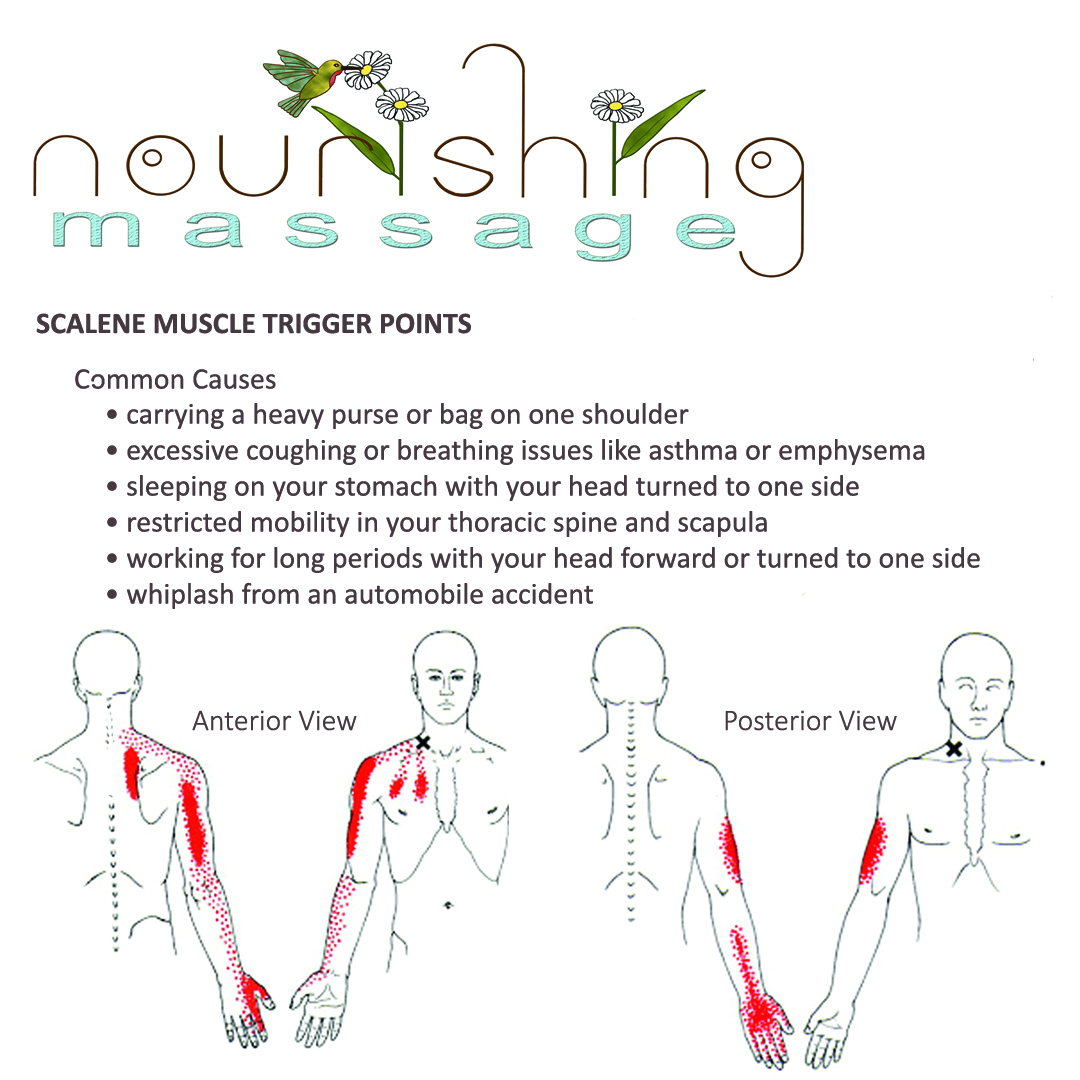Scalene Trigger Point Release and Stretch
The scalenes are a group of three muscles on the lateral side of your neck. You have your Anterior, Middle, and Posterior Scalenes.
The scalenes originate from the cervical transverse processes of C2-C7. They insert onto the first and second ribs and collectively act to elevate those ribs. People who suffer from respiratory distress use their scalenes as accessory muscles to aid in breathing. They also perform bilateral flexion of the neck (chin to sternum) and ipsilateral flexion of the neck (ear to shoulder).
The brachial plexus is a large bundle of nerves and blood vessels that sends signals from your spinal cord to your shoulder, arm, forearm, hand, and fingers. It exits the spine between C5-T1. It passes between the anterior and middle scalene muscles. It travels forward and down while passing under the pectoralis minor above your ribs. Compression of the brachial plexus due to tightness in your scalenes or pectoralis minor can result in shooting pain through the shoulder, arm, forearm, and into your hand. This nerve compression is commonly called Thoracic Outlet Syndrome.
When your scapula (shoulder blades) and thoracic spine don’t mobilize properly (e.g. forward head posture, rounded shoulders due to possibly tight chest muscles and limited range of motion in the thoracic spine and shoulders) the brachial plexus can become impinged causing pain and weakness. You might even find yourself having a hard time grasping and holding onto items. You might also experience numbness and tingling in your fingers.
Think about the actions that you do every day. Do you sit for long periods of time with your shoulders rounded forward and your head bent down over your sternum? Are you looking down at the screen on your laptop, cell phone, or tablet?
The more you know about how your muscles and body function, the better you can take care of them.
Origin- Transverse processes of cervical vertebrae C2-C7
Insertion- 1st and 2nd rib Action- Elevate first and second rib, bilateral flexion of the neck (chin to sternum), and ipsilateral flexion of the neck (ear to shoulder).
Palpation- Locate your Sternoclideomastoid (SCM) by rotating your head to one side and flexing it. You will see a muscle pop out. That is your SCM. Slide your fingers posterior to your SCM near your clavicle. You are now on your middle scalene. To locate your anterior and or posterior scalene slide your fingers either forward or backward from your middle scalene.
Trigger Points- There are 7 actively located trigger points within the scalenes. You have three in the anterior, three in the middle, and 2 in the posterior. Trigger points within this muscle can cause radiating pain in your shoulder, down your arm, forearm, into your hand and fingers. It also can cause radiating pain down your chest next to your sternum and down your back between your spine and scapula.
Some common causes of trigger points located within the Scalene Muscles are:
- Carrying a heavy purse or bag on one shoulder
- Excessive coughing or breathing issues like asthma or emphysema
- Sleeping on your stomach with your head turned to one side
- Restricted mobility in your thoracic spine and scapula
- Working for long periods with your head forward or turned to one side
- Whiplash from an automobile accident

